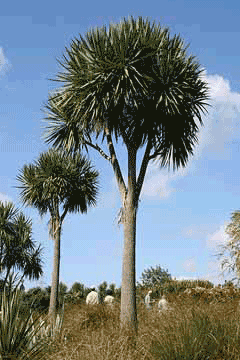Propagation
Stem cuttings - cut off the main stem just below the head and then saw off 5cm thick blocks of stem and place them 3cm deep in pure peat in a heated frame. Keep them moist until they are rooting well, then pot them up into individual pots. Plant out in late spring after the last expected frosts.
Suckers. These are best removed in early spring and planted out in situ. Protect the division from wind and cold weather and do not allow the soil to become dry until the plant is established. Divisions can also be potted up and grown on until established, planting them out in the summer.
Cultivation
Prefers a good sandy loam rich in humus[7]. Succeeds in full sun or light shade[13]. A very wind hardy plant, tolerating maritime exposure[14][15].
A very ornamental plant[7], it is not very cold-hardy, tolerating short-lived lows down to about -10°c[16]. It only succeeds outdoors in the milder areas of Britain[7][17][18]. It grows very well in Cornwall where it often self-sows[7][17][18]. A form with purplish leaves is hardier than the type and succeeds outdoors in Gloucestershire[17]. The flowers have a delicious sweet scent that pervades the air to a considerable distance[19].
Mice often kill young plants by eating out the pith of the stem[17].
